Children, just like adults, often suffer from various pathologies. Often young patients indicate pain around the navel. There can be many reasons for this symptom, so parents need to know when to raise the alarm and immediately go to the doctor. As a rule, such manifestations are attributed to poor quality food or other factors that at first glance do not cause concern. However, such a symptom sometimes indicates the development of serious diseases of the internal organs. That is why, if it occurs, it is better to consult a specialist.
Types of pain
Before finding out the cause of discomfort near the navel, it is worth determining its nature. Pain in babies can be:
- Spicy.
- Dumb.
- Aching.
Based on the above indicator, some causes of the symptom can be excluded. For example, inflammation of the appendix is characterized by the first type of pain. It is also worth highlighting colic, an accumulation of gases in the intestines, as a separate category. They bother babies up to 4 - 6 months old. Such manifestations are associated with the immaturity of the baby’s intestines, and can also be triggered by improper selection of infant formula or non-compliance with the diet by the nursing mother.
Reasons
The following diseases can cause pain in the navel area:
- enteritis;
- migraine;
- umbilical or inguinal hernia;
- oncological processes;
- appendicitis;
- volvulus.
Enteritis
Abdominal migraine
The reasons for the development of this pathology have not yet been established. There are hypotheses about the connection between abdominal migraine and endocrine and nervous systems. In children, the disease manifests itself as pain, nausea, weakness, and pale skin. The diagnosis is established after a complete examination by excluding other pathologies. Antidepressants, painkillers and anti-migraine drugs are used for treatment.
Umbilical hernia
Looks like a protrusion. Develops due to insufficient clamping of the umbilical cord, constant crying, constipation or cough. It often goes away on its own as you get older. To speed up the healing process, doctors prescribe the use of a patch, special massage, gymnastics, and placement on the tummy. If these methods are not effective, surgical reduction of the hernia is indicated for children over 5 years of age.
Inguinal hernia
It has the same appearance as the umbilical. May be congenital or acquired. Localized in the pubic or groin area, increases during coughing and crying. Accompanied by pain below the navel, weakness, pale skin. It is extremely rare for an inguinal hernia to be repaired on its own. Treatment of non-strangulated species up to 4 years of age is carried out in the same way as for umbilical ones. In case of a strangulated hernia, surgery is required. It is strictly forbidden to adjust the formation on your own; you also cannot apply heat or take medicines before the doctor arrives. 
Oncological process
This reason is the most serious. Sick children feel pain near the navel and along the entire intestine, flatulence, nausea, vomiting, and lack of appetite are observed. Against this background, a significant decrease in body weight occurs. The situation requires immediate consultation with a doctor and appropriate treatment.
Appendicitis
With inflammation of the appendix, pain is observed, which is initially localized in the epigastrium or near the navel, and then shifts to the right groin area. The child becomes capricious, irritable, with diarrhea, low-grade fever, nausea, and vomiting. Children take a forced body position: on the right side with legs bent at the knees and hip joints. Treatment is exclusively surgical.
Volvulus
This condition develops due to rotation of the intestine around its axis, resulting in obstruction. The pathology is accompanied by acute pain, which constantly intensifies; the child cries and presses his legs to his stomach. Sometimes there may be one-time vomiting and flatulence. Treatment is carried out surgically.
In addition to the above reasons, sometimes a child has a stomach ache in the navel area due to the following conditions:
- Aortic aneurysm.
- Abdominal syndrome with colds and flu.
- Urolithiasis. IN in this case pain occurs when stones pass.
- Overeating.
- Mesenteric blood flow disorder.
What to do?
If your baby is bothered by abdominal pain, you should pay close attention to this problem. You should definitely seek advice from a specialist or call an ambulance. Before the arrival of medical personnel, the little patient must be provided with rest and put to bed. It is not recommended to take any medications without a doctor’s prescription, as this can erase the clinical picture, which will significantly complicate the diagnosis.
Under no circumstances should you place heat on your stomach. If there is an inflammatory process, this will only accelerate its development.
Sometimes pain attacks appear suddenly and disappear on their own after a short period. In such situations, it is also worth going to see a pediatrician. Pain around the navel develops in many pathological conditions. However, parents cannot restore the cause on their own. Therefore, if such a symptom occurs, you should immediately show the baby to the doctor.
Unpleasant sensations in the stomach occur in people at any age, starting from infancy. Often, newborns under one year of age suffer from intestinal gas or colitis, but over time it becomes only more difficult to understand why a child’s stomach hurts. Older children are able to indicate the approximate location and even somehow describe the nature of the sensations, but using such data it is still unlikely to be able to accurately determine the disease.
Most parents wonder what to give if their child has a stomach ache, but this is a very difficult question. You can use any medications only as prescribed by a doctor, after he makes the correct diagnosis. Self-medication can lead to even more serious problems than pain in the navel area of a child.
Most often, the disease can be determined by other symptoms accompanying the pain syndrome. For example, the baby may have a temperature above 38, he may feel sick or vomit. If a child has a stomach ache and diarrhea, this often indicates poisoning, but it is worth considering most probable diseases with similar symptoms.
Nature and location of pain
An experienced doctor is able to talk about a specific disease, based on the nature and location of the source of pain. There are quite a few options, for example:
- Pain in the left hypochondrium. She often talks about problems with the pancreas. If the sensations appeared after physical exercise or other physical activity in a baby, that is, there is a possibility that his diaphragm is not functioning properly.
- If a child has a stomach ache in the navel area, there may be several options. Dull sensations on the right side sometimes indicate appendicitis, but only if there is a high temperature, sometimes severe diarrhea and even pain when urinating.
- If the unpleasant sensations are located in the center, then they come from the intestines. This is a fairly simple option, since often everything is connected with ordinary junk food. You can sound the alarm if a fever begins.
- If a child has a stomach ache and fever, it is difficult for him to move, and sometimes vomiting, then the likelihood of intestinal infections is high. In this case, he does not need any medication, just give him plenty of water to avoid dehydration. If the flow is very serious, you should call an ambulance.
- If the pain, combined with temperature, is localized on the sides, then this may be a signal of nephritis. If the sensations are very sharp and the fever does not subside, then you need to call an ambulance.
- If the pain syndrome permeates the entire abdomen, and this is accompanied by a temperature, then you need to immediately call the doctors, since this is caused by serious reasons, such as an open ulcer, appendicitis, and foreign objects entering the body.
The main problem when trying to understand why a child has a stomach ache is that the baby is still not able to clearly describe his sensations. It is possible that vomiting without fever is caused only by poor quality food, but lack of attention to complaints can lead to serious consequences. It is better to consult with a specialist and make sure that everything is in order, than not to do this and allow the development of a serious illness.
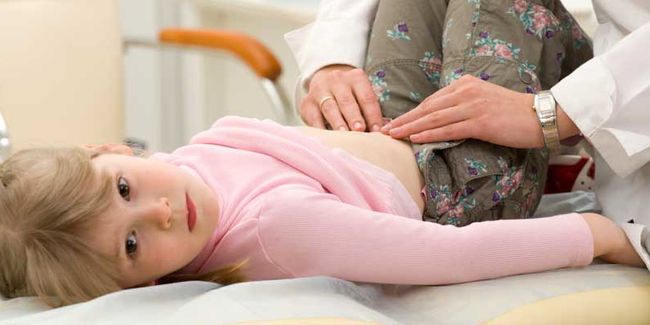
Probable diseases and symptoms
There are many pathologies that lead to pain in the abdominal area. Only a doctor can determine exactly which of them affected the baby after taking tests, but already at home you can roughly guess the options and think about the severity of the situation.
- If a child has a stomach ache and nausea, the strongest sensations appear before and after eating, and a fever begins, then we can talk about possible gastroenteritis.
- Appendicitis practically never occurs in children, and if it does happen, it can be difficult to suspect something is wrong. The fact is that children often experience pain only after the appendix ruptures. The first symptoms are problems with appetite and lack of energy. Temperature increases are generally moderate. The child has severe abdominal pain in the navel area, and the feeling does not subside for many hours. If there are problems with stool and discomfort during palpation, then you need to urgently go to the hospital.
- If a girl feels pain in the abdomen and lower back, visits the toilet too much, and at the same time her temperature rises, then there is a high probability of kidney inflammation.
If a child often has a stomach ache, this may indicate a variety of chronic diseases. The reasons are different. For example, the baby could develop worms, abdominal migraine, or simply chronic constipation.
Pay attention! The most important symptoms for which you need to immediately consult a doctor and cannot be treated on your own are a long duration of pain (over two hours), without relief, pain on palpation, and also if diarrhea, vomiting and high fever occur.
A small percentage of children may get sick due to mental problems. In this case, it will not be possible to establish the exact cause, since severe stress will be to blame. Usually everything goes away on its own over time. To alleviate the condition, herbs such as motherwort or valerian are suitable. You can give your child milk and honey at night. Walking and bathing with supplements are also good options to combat stress.
If the child’s body is affected by worms, then the head will also hurt, and the stomach will begin to swell. Grinding of teeth at night is a characteristic sign of helminthic infestation. Over time, worms (eggs, parts of organisms) can be seen in the child's stool.
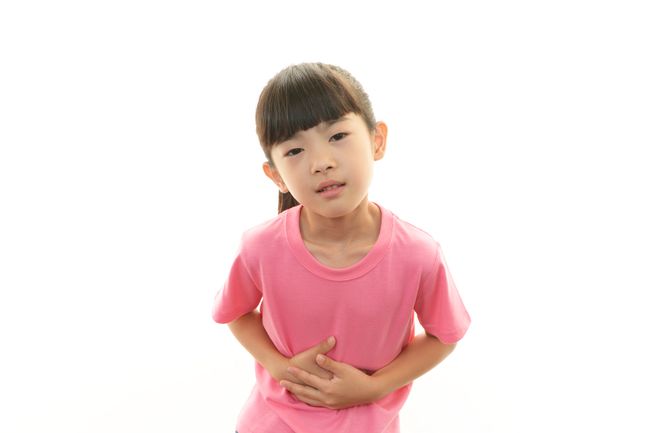 If a child has abdominal pain for more than two hours, you should immediately consult a doctor!
If a child has abdominal pain for more than two hours, you should immediately consult a doctor! Other possible pathologies and methods of exposure
- It is not uncommon for children to develop acute pancreatitis, especially if they have recently had mumps. In this case, children have abdominal pain in the upper left and vomiting. The sensation may radiate to the shoulder blades. The process is accompanied by nausea, and occasionally the skin turns yellow. Usually, no unpleasant sensations arise during palpation, and the abdomen itself is quite soft. In case of acute pancreatitis, the child should be provided with plenty of fluids and rest while waiting for the ambulance.
- If your stomach hurts after eating, this may indicate acute gastritis. As a rule, the child loses appetite and may experience nausea and vomiting. In this case, you will need to see a doctor to prescribe treatment, and the first aid will be rest, drinking and a heating pad.
- If a child aged 5 years or older has a stomach ache, there is a possibility of acute nephritis. In this case, the pain is localized near the lower back, the urine darkens, the eyes swell and the temperature rises slightly. In this case, the child should not be given plenty of water. If he does not go to the toilet for a long time, he will need a bath with warm water. Be sure to call a doctor.
Any parent is interested in what to do if a child has a stomach ache. Many often try to give the baby painkillers as quickly as possible, but this cannot be done, and not only because all medications must be prescribed only by a doctor. The fact is that the pills will hide the pain, not get rid of it. As a result, it will become unclear how long the pain syndrome persisted, which means it will not be possible to understand whether the cause was something serious.
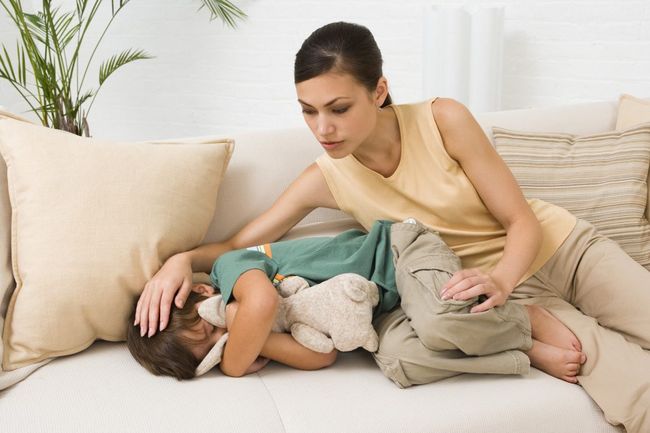
Poisoning
One of the very common causes of abdominal pain, which usually does not require calling an ambulance, is simple poisoning. Most often, this is observed in children under five years of age. In this case, the greatest danger is possible dehydration, and this is what will need to be dealt with.
Signs of poisoning:
- Contraction of the esophageal muscles
- Diarrhea, sometimes with bloody, mucous or watery impurities.
- Fever or chills.
In this case, the child may vomit, sometimes not only with undigested food, but also with a greenish liquid. In this condition, you need to give the child something to drink, such as clean water or weak tea. You need to be careful with food. Best option– foods that have an increased fixing effect, such as bananas. You can also give your baby rice porridge, dietary soup or crackers.
Pay attention! If you experience diarrhea with a very strong odor, this may indicate the development of dysentery. A signal of serious danger will also be very dark color feces.
If a child often complains of abdominal pain, it is necessary to pay attention to this close attention. The causes of pain can be different. As a rule, survey results are rarely encouraging.
Where to start?
If the baby's stomach hurts, parents should remember how regular the baby's bowel movements have been recently. The cause of pain may be ordinary colic, which is accompanied by constipation. Perhaps there have been some changes in the child’s diet that have caused discomfort.
Adult children are already able to independently monitor the frequency of their trips to the toilet and the consistency of their stool. You need to ask your child what he ate and how he went to the toilet the last few days. If acute cutting pain appears in the abdominal area, you must call an ambulance.
If abdominal pain has become regular, despite the absence of problems with bowel movements, you should visit a therapist. If the child is still small, the local pediatrician gives initial recommendations. What advice can he give?
To find out the causes of pain, the doctor may prescribe the following procedures:
- contacting a gastroenterologist to identify diseases of the duodenum or stomach;
- undergoing a detailed ultrasound of the abdominal cavity;
- stool analysis for dysbacteriosis, coprogram and general analysis blood;
- x-ray of the lumbar spine;
- Adult children may be prescribed EGD (in common parlance, “swallowing a light bulb”).
When the results of the examination are ready, we can judge the causes of pain.
Dysbacteriosis
Violation of the intestinal microflora can cause acute colic and pain in the navel area. Dysbacteriosis occurs for several reasons:
- taking antibiotics that are not accompanied by preventive measures to restore beneficial microflora;
- violation of the diet, eating fried or unhealthy foods containing strong dyes. Lack or deficiency of plant fibers and fiber in the diet;
- damage to the intestines by pathogenic bacteria and microbes that cause intestinal disorders.
Usually, with dysbacteriosis, pain spreads from the left side of the abdomen to the navel and back. The sensations are monotonous, aching, sometimes turning into pain. Colic may be accompanied by diarrhea, bloating and increased gas production.
Children of all ages, starting from newborns, can suffer from intestinal dysbiosis.
Prescribed for the treatment of dysbiosis dietary food and special preparations that restore intestinal microflora. Dysbacteriosis can be treated at home if it is not a symptom of an acute intestinal infection.
Appendicitis
Inflammation of appendicitis always begins suddenly. The child may feel sharp pain spreading from the lower right side of the abdomen to the navel. After some time, the sharp pain concentrates on the right. Shortly before this, the child loses his appetite, the temperature may rise, or nausea may appear.
As soon as parents notice such symptoms, it is necessary to urgently call an ambulance. It is impossible to delay in solving such a problem. Inflammation of appendicitis always develops quickly. Delay threatens the abscess breaking through and pus entering the abdominal cavity.
Self-medication in this case is not only useless, but destructive for the child. The ambulance team will take the patient to the hospital, where the surgeon will have to perform an operation to remove the inflamed organ. The child will first undergo a cleansing enema and a rapid blood test for the presence of leukocytes.
Surgeries to remove the appendix are performed quickly and do not cause complications. Inflammation of appendicitis occurs in children over 2 years of age. The cause of this disease can be an unbalanced diet, illness or constipation.
Inflammation of the lymph nodes of the abdominal cavity
Many past infections colds, sore throat, bronchitis or simply reduced immunity can cause inflammation of the abdominal lymph nodes. Contrary to popular belief, lymph nodes are not only found in the neck or chest. Around the navel there are also many security posts of the lymphatic system, which can respond to frequent ailments. Inflammation of the abdominal lymph nodes is cumulative in nature, that is, pain may not appear during the disease, but after recovery.
Stitching spasms force a person to bend his legs and constantly change his position in search of a suitable position. When asked about the localization of pain, the child covers the navel with his palm. In addition to noticeable pain, children of any age have a fever and vomiting.
This disease can only be treated in a hospital under the supervision of a doctor. Therapy is carried out with antibiotics and painkillers.
Intestinal hernia
With such an illness, the child will complain not only of paroxysmal pain in the navel area. The disease may be accompanied by nausea or vomiting, and bowel dysfunction. A hernia occurs when part of the intestine protrudes and appears under the skin. Any doctor can feel the place where the hernia appeared, since a noticeable compaction appears in this area. The cause of its appearance may be dysbacteriosis, poor diet, and frequent constipation.
Intestinal hernia can occur in both adults and young children. An experienced doctor should treat it. The first thing the pediatrician will do is palpate the entire peritoneum and try to find out the size of the hernia. Most often, pain in the navel area provokes contraction of the intestinal muscles, which causes increased discomfort.
In the absence of complications, physical therapy, massage and gymnastics will be prescribed in combination with proper nutrition. If the disease has progressed, surgery will be required.
Umbilical hernia
This pathology is mainly found in children under the age of one year. Umbilical hernia is a very common childhood disease, occurring in every fifth child. Externally, the formation looks like a navel protruding strongly above the abdomen. It cannot be said that it is the hernia that leads to pain. Quite the opposite: intense crying and severe straining can cause pain in the navel area and its simultaneous protrusion outward.
Usually, before the age of five, an umbilical hernia heals on its own with constant exercise and strengthening of the abdominal muscles. If a child's hernia has not disappeared by age 5, it can be corrected with cosmetic surgery.
Passing kidney stones
Kidney stones can form not only in adults, but also in children. If a child drinks little fluid during the day and often eats spices or fried foods, he may develop a disease of the urinary system. This disease is found in school-age children.
When sand or stones leave the body on their own, pain can radiate to all organs of the abdominal cavity. Mostly sharp pain appears under the navel in the lower abdomen.
It is possible to identify diseases of the urinary system using ultrasound and urine tests. Abdominal pain is a secondary symptom, and the main indicators may be the appearance of blood in the urine, urinary retention, nausea or vomiting.
This disease can be treated in various ways. The decision on the type of therapy depends on the severity of the disease and how the stone removal process proceeds. If there are no acute manifestations, the child will be prescribed a special diet and physical treatment. When acute pain is accompanied by vomiting and bleeding, immediate surgical intervention is necessary.
Abdominal migraine
This disease can appear in children aged 5–10 years. Usually, pain in the navel area is duplicated by headaches. In this case, the child cannot clearly indicate the point where the pain is localized. Nausea or vomiting may occur occasionally.
If, as a result of the examination, it becomes clear that everything is normal with the child’s gastrointestinal tract and abdominal organs, you need to contact a neurologist. Abdominal migraine can occur due to nervous stress or overexcitation. Children whose relatives also suffer from similar pain are especially susceptible to it.
As a treatment, a neurologist may prescribe a diet, reducing emotional stress, limiting watching TV and computer games. For most children, migraines go away with age. But it is necessary to constantly see a doctor and monitor the manifestation of symptoms.
If a child has severe abdominal pain in the navel area, then this condition may indicate the development of various pathological processes in the body. Parents will not be able to independently determine the origin of the pain syndrome, so they are recommended to show their child to a pediatrician, who will carry out a set of diagnostic measures and establish the root cause.
Why does the stomach around the navel hurt in a small child?
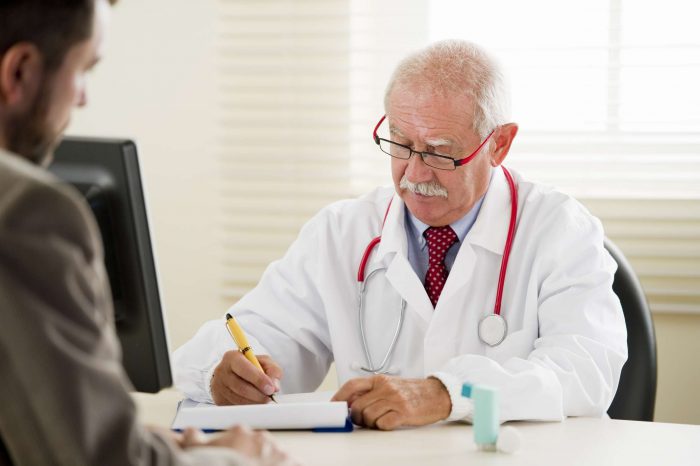
Aching pain in the navel area can occur due to the development of diseases in the gastrointestinal tract. Most often, children are diagnosed with the following:

Diseases that can cause pain above and below the navel
All parents immediately begin to sound the alarm when their children experience pain. Most often, babies complain of discomfort in the abdomen, localized near the umbilical area. Pain syndrome can be provoked by various external factors, but it should also be considered as a symptom accompanying various gastrointestinal diseases.
After a child complains of pain, parents need to find out its intensity: cutting, aching, colicky, dull.
Umbilical hernia
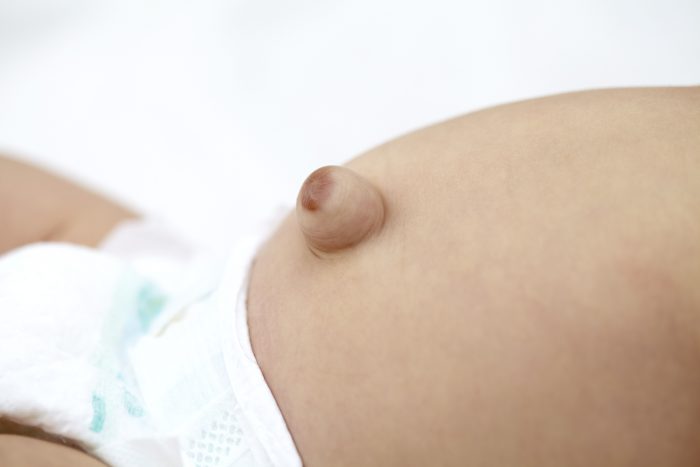
With the development of this pathology in children, protrusion of an internal organ occurs. The reason for the development of such a hernia is a defect in the peritoneal (anterior) wall. When palpating the abdomen of a young patient, a specialist can feel a protrusion localized in the umbilical region.
This pathology can develop for the following reasons::
- prolonged constipation;
- severe cough;
- prolonged crying;
- diseases in which the tone of muscle tissue is significantly reduced.
Specialists, as a rule, are in no hurry to take drastic measures aimed at eliminating umbilical hernias. Statistics show that by the age of 7, almost every protrusion disappears as suddenly as it appeared.
Parents can speed up this process in the following way::
- force children to perform physical exercises that will help strengthen the muscle tissue located in the abdominal wall;
- providing massages;
- Constantly turning babies onto their stomachs;
- you can use a special plaster to reduce the hernia, etc.
In the case where the umbilical ring is quite large, the above methods will not help cope with the protrusion. Surgical treatment of umbilical hernias is indicated for this category of patients.
Volvulus of the small or sigmoid colon
In young patients, due to this pathology, severe intestinal obstruction develops. They are required to undergo surgical treatment.
The development of pathology is usually provoked by the following factors:
- constipation;
- mechanical damage;
- adhesive process;
- malignant and benign neoplasms;
- flick;
- helminthic infestations, etc.
As a rule, when intestinal volvulus occurs in children, characteristic symptoms are observed: gag reflex, pain, tension in the abdominal muscles, increased gas formation, and high temperature. If urgent measures are not taken, the child will begin to become intoxicated, infected with death, and everything will end very sadly for him.
Inflammatory process in the intestines (small)
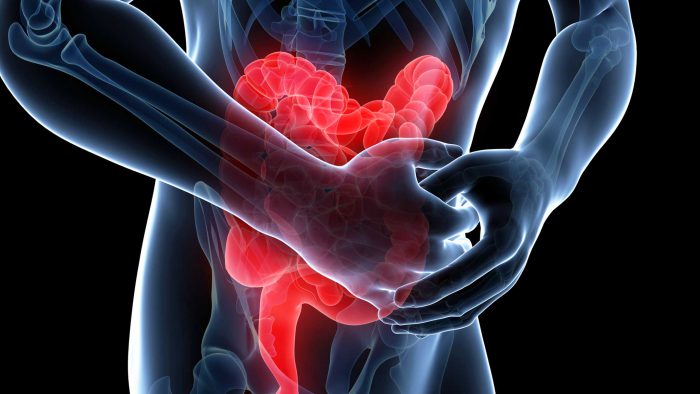
If the mucous membrane in the small intestine is inflamed, then this pathological process is called enteritis.
Various factors can trigger its development.:
- hypothermia;
- improper and irregular nutrition;
- penetration of infections and other pathogenic microflora into the body;
- individual intolerance to certain medications.
The development of inflammatory processes on the intestinal mucosa in most cases is accompanied by characteristic symptoms:
- nausea appears;
- pain syndrome localized in the umbilical zone;
- vomiting begins;
- defecation processes are disrupted (more often children suffer from diarrhea);
- the temperature rises, a fever begins;
- All signs of collapse are showing.
Before prescribing a drug course of therapy, the gastroenterologist must conduct a comprehensive examination of the young patient. Once the pathology has been diagnosed, the specialist will prescribe antibiotics and other medications to the baby.
If the pathology occurs in an acute form, then children undergo gastric lavage, after which therapy is prescribed aimed at removing toxins from the body. At the same time, the baby should drink a large amount of liquid daily. Therapeutic fasting is indicated.

Many schoolchildren and children younger age are faced with a disease such as migraine. As a rule, abdominal pathology is accompanied by pain localized near the navel.
Migraine may be accompanied by the following symptoms:
- severe nausea;
- terrible headache;
- gag reflex;
- blanching of the skin and mucous membranes;
- coldness of the lower extremities.
If pain occurs in the central part of the abdomen, babies may experience discomfort for several days or just a few hours.

With the development of oncological processes in a young body, characteristic symptoms may appear:
- nausea appears;
- bloating;
- gag reflex;
- pain syndrome localized either in the intestinal area or in the umbilical area;
- loss of appetite;
- rapid weight loss, etc.
If parents notice symptoms of cancer in their child, they immediately need to show him to specialized specialists. Under no circumstances should they engage in amateur activities and try to treat cancer using “old-fashioned” methods. With such diagnoses, the prognosis can be favorable only if it is received in a timely manner. medical care and surgical treatment performed.
"Inguinal" hernia
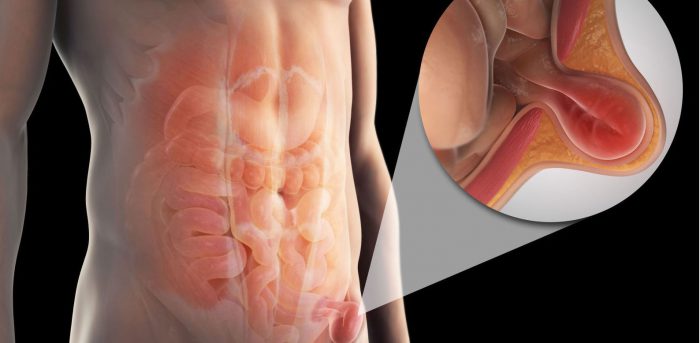
In most cases, in young patients, protrusion is accompanied by severe umbilical pain. Boys under one year of age are more susceptible to developing this pathology. Protrusion can be either congenital or acquired.
Babies may experience the following manifestations of an inguinal hernia::
- pale skin;
- lethargy;
- general malaise;
- pain in the navel area, etc.
If a specialist during diagnosis determined the type of hernia and did not notice signs of strangulation, then conservative treatment can be prescribed.
Children are recommended to engage in physical exercise (they need to do exercises that are aimed at strengthening the muscles in the abdominal area) and undergo a massage course. Parents should not try to correct hernias on their own; it is also forbidden to give children painkillers or apply a warm heating pad to the area where the pathology develops.
Children often complain of pain in the abdominal cavity, the exact location of which is difficult for a non-specialist to determine. There are many causes of pain: diarrhea, allergies or even psychosomatic reasons. For the speedy recovery of the child and rid him of the painful pain in the area below the navel it is necessary to make a correct diagnosis and begin to treat the patient.
 Parents do not have enough information to diagnose Why does the child have pain on the left side of his abdomen? In an emergency, surgical intervention may be necessary to save the child’s life, so showing excessive independence can lead to dire consequences. Therefore, first of all, it is necessary to ask the patient about his feelings.
Parents do not have enough information to diagnose Why does the child have pain on the left side of his abdomen? In an emergency, surgical intervention may be necessary to save the child’s life, so showing excessive independence can lead to dire consequences. Therefore, first of all, it is necessary to ask the patient about his feelings.
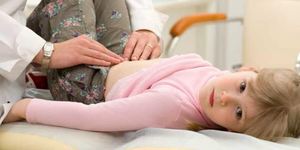 If schematically represent the stomach in the form of a circle with a center in the navel area, it can be divided into four sections: the upper left and right sides and two lower parts. At the top left of the center of the abdominal cavity there are organs, pathological processes in which can cause attacks of pain. Due to some health problems, the spleen becomes larger in size, making it susceptible to damage even from minor injuries. Blueness around the navel indicates that there has been a violation of the integrity of this organ.
If schematically represent the stomach in the form of a circle with a center in the navel area, it can be divided into four sections: the upper left and right sides and two lower parts. At the top left of the center of the abdominal cavity there are organs, pathological processes in which can cause attacks of pain. Due to some health problems, the spleen becomes larger in size, making it susceptible to damage even from minor injuries. Blueness around the navel indicates that there has been a violation of the integrity of this organ.
If a child has pain on the left side, the problem may be related to the intestines, especially if flatulence occurs. Fever, constipation and diarrhea, stool with blood or mucus are signs of severe pathology. Black stool indicates about blood loss in the stomach or intestines.
Gastric ulcer and other pathologies of its mucous membrane are accompanied by nausea and nagging pain lasting longer than a day. If these symptoms are present, consultation with a specialist is required.
Problems with the pancreas have symptoms similar to stomach ulcers, but they are characterized by fever. If a patient experiences sharp pain in the abdomen when inhaling air, the cause may be lung diseases of various etiologies.
Pain in the left lower abdomen may be caused by various reasons: from pinched nerve endings coming from the spine and intestinal infections, to urolithiasis, which often leads to colic in the kidneys.
First aid for a child in pain
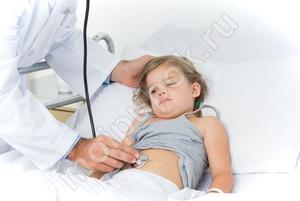 Baby's complaints of pain in the abdomen must be taken calmly, but at the same time try to understand the localization and track other symptoms.
Baby's complaints of pain in the abdomen must be taken calmly, but at the same time try to understand the localization and track other symptoms.
Under no circumstances should you do anything on your own. Pr and acute pain the best solution would be to call an ambulance and agree to go to the hospital for examination if the doctors insist on it. It is good if, as a result of the examination in the hospital, no serious pathologies are revealed. In more severe cases, delay can be very dangerous.
A preschooler suffering from pain in the navel area, you need to urgently call a doctor or emergency assistance and ensure a comfortable lying position. This area should not be heated to avoid activating a possible inflammatory process and increasing pain.
It is also not recommended to independently prescribe to your child any medications for spasms, which are often used by adults. These medications may not be suitable for the baby in terms of composition and permissible dosage or may lead to a worsening of the condition.
What examinations are needed?
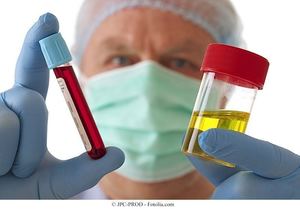 A consultation with a children's local doctor will show what measures need to be taken if a child has pain in the lower abdomen. Perhaps everything will be limited only to getting tested and visiting the clinic again. In more severe cases, when the pain becomes unbearable, it is necessary to go to the children's hospital inpatient department by ambulance.
A consultation with a children's local doctor will show what measures need to be taken if a child has pain in the lower abdomen. Perhaps everything will be limited only to getting tested and visiting the clinic again. In more severe cases, when the pain becomes unbearable, it is necessary to go to the children's hospital inpatient department by ambulance.
Based on the results of the examination, the child is referred to a specialist with a narrower focus for further effective treatment.
Prevention
 Due to the fact that pain in the abdominal cavity can be of completely different etiologies, it is impossible to give any effective advice to prevent them. However, there are certain universal recommendations on what to do to prevent discomfort in the left lower abdomen:
Due to the fact that pain in the abdominal cavity can be of completely different etiologies, it is impossible to give any effective advice to prevent them. However, there are certain universal recommendations on what to do to prevent discomfort in the left lower abdomen:
- proper regular nutrition with fresh foods (meat and fish (especially river fish) for a child must undergo long-term heat treatment);
- compliance with hygiene rules (when teaching a child to wash hands and handle vegetables and fruits, parents themselves need to set an example in this matter);
- prevention of colic in the intestines with the help of massage, which should be carried out by a specialist;
- carrying out activities to strengthen immunity;
- Seeing a doctor at the slightest sign of illness and following his instructions;
- the use of multivitamins recommended by a specialist who keeps the child’s medical history.
Based on the information presented above, we can conclude that the abdominal cavity contains many vital organs responsible for hematopoiesis, blood purification, digestion, and removal of residual waste products. Any malfunction in their work can cause pain to the left of the navel. Diagnosing the source of anxiety is very difficult, even with the use of a wide range of tests and other examinations. Therefore, self-treatment if a child has abdominal pain on the left side is out of the question.
Attention, TODAY only!



